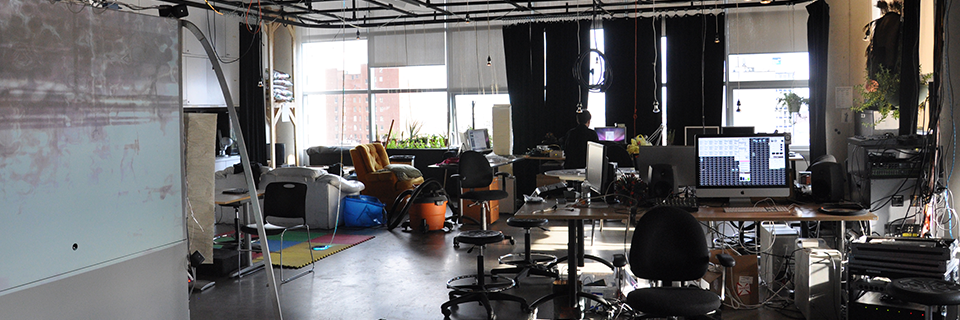Dr. Sha Xin Wei
Sha Xin Wei, Ph.D., is Canada Research Chair in media arts and sciences, and Associate Professor of Fine Arts and Computer Science at Concordia University in Montréal, Canada. He directs the Topological Media Lab, a studio-laboratory for the study of gesture and materiality from computational and phenomenological perspectives. His graduate courses combine critical studies of computation and technology with studio work in responsive environments and live events. Sha’s major art research work include the TGarden responsive environments, Hubbub speech-sensitive urban surfaces, Membrane calligraphic video, and Softwear gestural sound instruments, and most recently kinetic sculpture and low resolution displays responding to movement and gesture.
Sha Xin Wei was trained in mathematics at Harvard and Stanford Universities, and worked more than 12 years in the fields of scientific computation, mathematical modeling and the visualization of scientific data and geometric structures.
In 1995, he extended his work to network media authoring systems and media theory coordinating a 3 year long workshop on interaction and computational media at Stanford. In 1997, he co-founded Pliant Research with colleagues from Xerox PARC and Apple Research Labs, dedicated to designing technologies that people and organizations can robustly reshape to meet evolving socio-economic needs.
In 1998, Sha also co-founded the Sponge art group in San Francisco, to build public experiments in phenomenology of performance. With Sponge and other artists, Sha Xin Wei directed event/installations in prominent experimental art venues including Ars Electronica Austria, V2 The Netherlands, MediaTerra Greece, Banff Canada, Future Physical United Kingdom. He has also exhibited media installations at Postmasters Gallery New York and Suntrust Gallery Atlanta. These works have been recognized by awards from major cultural foundations such as the Daniel Langlois Foundation for Art, Science and Technology; the LEF Foundation; the Canada Fund for Innovation; the Creative Work Fund in New York; and the Rockefeller Foundation.
After obtaining an interdisciplinary Ph.D. in 2001 at Stanford on differential geometric performance and the technologies of writing in Mathematics, Computer Science, and History & Philosophy of Science, Sha joined the faculty of the School of Literature, Communication and Culture at the Georgia Institute of Technology in Atlanta, and the research faculty in the Graphics, Visualization and Usability Center in the College of Computing, where he founded the Topological Media Lab, dedicated to the study of gesture, distributed agency and materiality with application to the phenomenology of performance and the built environment.
In 2004-2005, Dr. Sha was Visiting Scholar in History of Science at Harvard University, and the Program in Science, Technology, and Society at MIT, writing about agency, materiality, performance, and topological media. In 2005, Dr. Sha became director of Hexagram’s Active Textiles and Wearable Computers Axis.
Dr. Sha is a co-editor of the Artificial Intelligence and Society journal, the Experimental Practices book series (Rodopi Press), FibreCulture, and the Creative Interfaces & Computer Graphics journal. Publications include the essays “Resistance is Fertile: Gesture and Agency in the Field of Responsive Media,” Configurations 2003, “Demonstrations of Expressive Softwear and Ambient Media,” Ubicomp 2003, and to appear in 2005-2006: “Whitehead’s Poetical Mathematics,” in Configurations, “TGarden As Experimental Performance,” in Modern Drama. He is now writing a book on poetics and enchantment in topological matter.

